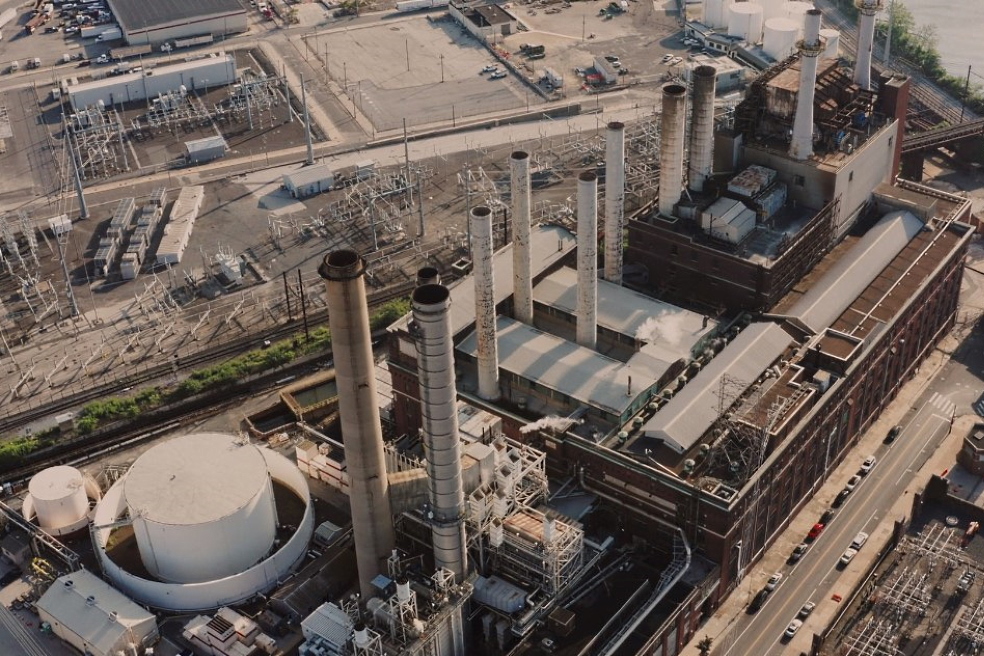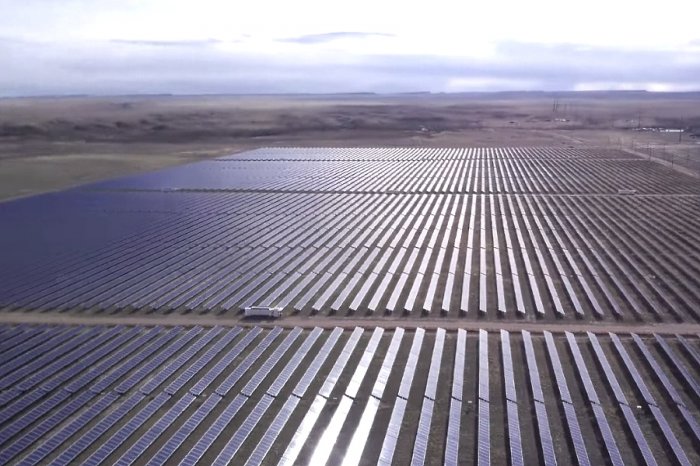Corporate refinancing for businesses and enterprises
Skywalk Investment Group offers:
• Investment financing from $ /€ 5 million or equivalent and more
• Minimizing the contribution of the project promoter
• Investment loan term up to 20 years
• Credit guarantees
The latter reason has led to the growth of corporate refinancing around the world, especially during period of prolonged crisis and market uncertainty.
The term "refinancing" is also used in the meaning of loan rollover.
As a rule, this process is carried out by issuing a new loan instead of the previous one or by exchanging old bonds for new ones.
The purpose of refinancing is mainly to improve the terms of the loan (maturity, payment schedule, interest rate), as well as to combine several debt obligations into one more acceptable loan for business. In some cases, companies request refinancing when they need significant additional funds in excess of the original loan.
Unlike refinancing, restructuring is associated with short-term stressful situations.
Instead, refinancing is more suitable for companies that perform well in the short term and continue to generate sufficient cash flow.
Concluding a refinancing agreement on suitable terms requires a certain amount of effort from the business. In particular, the borrower must prove reliability and creditworthiness to the financial institution. Like any other loan application, the refinancing application is subject to detailed review.
The conditions that a borrower must meet relate primarily to its assets and financial statements. It is obvious that a low credit rating can negatively affect the offered terms and interest.
Economic factors also have a strong impact on corporate refinancing conditions for enterprises.
Banks and financial institutions are usually more willing to provide loans for refinancing when the country's economy is developing and forecasts for the near and distant future are positive.
While refinancing may seem like an easy way to get more money, it can turn out to be disadvantageous for borrowers. We recommend that you carefully study the proposed terms in order to assess the real value of money and understand the potential risks of a new agreement.
Skywalk Investment Group, an international company headquartered in Spain, specializes in financial services for large businesses.
We provide corporate refinancing for large companies, project finance services (PF), long-term loans and full financial support for projects in the field of energy, infrastructure, heavy industry, oil and gas, waste processing, agriculture, real estate and tourism.
Business refinancing: some reasons
The decision to refinance a previous loan can be made not only in the context of improving conditions in the financial market and the emergence of more attractive financial products.This decision may be forced, taken by the company's management against the background of objective problems of an internal or external nature that negatively affect the performance of the business.
Timely identification of business financial problems that could disrupt debt service and require corporate refinancing is an important task for both financial institutions and the management of the borrowing company. In developed countries, the identification of problem loans has long been put on stream.
Specialized departments of banks are guided by a complex, well-developed system of criteria for predicting potential problems for borrowers and taking timely measures, including restructuring and refinancing.
The reasons for refinancing businesses can be as follows:
• Reduction in the company's revenue, increase in accounts receivable or payable, which is accompanied by the risk of non-payment of debt. In some situations, the problem is caused by the sale of products to insolvent buyers, which requires the bank to use additional restrictive measures to reduce accounts receivable and maintain the borrower's solvency in the long term.
• Low efficiency of management decisions. Management problems can arise as a result of abrupt changes in the management of the company, changes in the structure of the business or the transfer of the company to new owners. Wrong decisions related to large investments, entering new markets or other capital intensive projects can affect the borrower's ability to service debt.
• Litigation, especially claims of others against the borrowing company, which may result in the disposal of significant amounts of money or valuable assets. This is a serious threat to the company's solvency and may require urgent measures to restructure or refinance existing debt, taking into account the consequences of litigation.
• Insufficient initial investment, which requires additional funding for the successful implementation of ongoing projects. This situation may arise due to the mistakes of the borrower's financial team at the investment planning stage or in the event of negative factors of force majeure, as well as in case of unfavorable market changes.
Problems with servicing loans can arise for many reasons, which are associated with the lending process, changing market conditions, the general economic downturn, inadequate company management, force majeure and many other nuances of commercial activity.
The role of refinancing in the implementation of long-term investment projects
In project finance schemes, the risk of early repayment of a loan is a typical risk borne by banks.If the same lenders finance the construction and operation phases, they bear the risk of early repayment of the entire loan by the SPV.

This is a likely situation, since the loan provided at the beginning of the project is quite expensive due to the high risk. Once construction is completed and the project is successfully launched, the risk is reduced and the SPV can refinance the initial loan with better financial products.
To avoid this, banks usually provide for early repayment of loan payments with an additional fee. To avoid the described situation, financing of individual phases of construction under the PF is organized independently. Different syndicates can be the source of financing for the construction of the project and the operation.
The optimal solution is to pay off a construction loan at the time of production start-up and take a separate loan for the operation stage.
However, it should be noted that in this case the SPV cannot repay the initial debt on its own, and in the event of problems with refinancing, the banks financing the construction bear an additional risk. To minimize this risk, all funding (even if organized by independent syndicates) is usually provided during the planning stage.
In this case, the second loan syndicate most often guarantees the repayment of the main loan. However, since the implementation of the project can take up to several years, and the project itself is subject to high uncertainty, it is not always possible to obtain long-term loans for the operational phase at the very beginning. In this case, the original lenders usually ask the sponsors for a loan repayment guarantee.
Additionally, in order to motivate participants to arrange for further financing, the interest rate on the loan increases over time.
However, more often than not, all financing is provided by one group of lenders, which provides higher financial flexibility and allows better risk management of the project, involving banks in accepting and minimizing risks.
Securitization as a business refinancing tool
Securitization is a refinancing instrument, in which a portfolio of assets is formed, and liquid securities (stocks or bonds) are issued against them.These securities are offered for purchase by the investment community.
The initiator is a financial institution that creates a special investment purpose company (SPV) for this purpose.
Due to heightened competition in the market, it can be expected that the value of accounts receivable in the portfolio of enterprises will increase. This is a serious challenge for creditor companies. Traditional methods of financing receivables are no longer sufficient, and appropriate forms of alternative financing such as asset-backed securities (ABS) securitization must be used.
Securitization makes it possible to raise funds even for those companies that, due to their low credit rating, cannot do it directly. The issuance of ABS is a complex and multi-threaded financing process that requires significant costs for the borrower.
This business refinancing tool can only be used by companies that meet high qualifications and have suitable pools of receivables.
Securitization with ABS can be used by both commercial organizations and local governments or other market participants requiring refinancing of their debts. A company, financial institution or local government body, called the initiator (organizer), interested in selling its debt, can obtain funds in the financial market by selling the assets of a specially created independent company.
For this purpose, the initiating companies create a separate legal entity and transfer part of the assets to it.
Subsequently, SPV issues commercial debt securities against these assets and sells them on the financial market.
The funds received from the sale of these securities are used to pay off debt obligations to the initiator of the program. In this way, the initiator company indirectly attracts the required funding.
Types and stages of securitization
The conditions of the corporate refinancing program are always adapted to the individual needs of the participants in this process and the specifics of the securitized assets.The exact model of securitization as a business refinancing tool can change significantly.

The general model of securitization transactions includes the following stages:
• Lending through the securitization initiator, resulting in accounts receivable.
• Development of a customized program for the issue of securities, taking into account the needs of a specific project.
• Clarification of the rules for the selection of assets and the division of the structure of debt held for sale and refinancing.
• Evaluation by the initiator of the transaction with assets intended for securitization. Indebtedness is assessed in order to formulate criteria for issued securities (ABS). The rating is positively influenced by the diversification of debtors, as well as their significant differentiation by industry, location and company size. In other words, the rating is positively influenced by various external and internal factors that reduce the risk of the portfolio of receivables.
• Conclusion of an agreement with a professional consultant. An external specialist can be assigned to design and service the entire transaction, including the establishment of an SPV, the acquisition of SPV shares, the processing of payments on issued ABS, and ongoing monitoring. The consultant also receives funds from debtors and pledges them to investors (buyers of asset-backed securities).
• Additional security for the transaction in case the initiator's debtors do not redeem the receivable is the opening of a special account, to which the initiator transfers funds. SPV has direct access to this account. The funds in this account come both from the initiator and from the execution of the transaction (the difference between the income from the sale of receivables and the cost of corporate refinancing).
• Creation of a special company, which, after completion of the preparation and conclusion of the relevant agreements with all parties to the transaction, issues securities placed on the financial market.
• The proceeds from the sale of ABS are transferred by the issuing organization to the SPV bank account.
The transfer of assets can take the form of a traditional sale for debt securities.
Traditional securitization is off-balance sheet financing.
This means that the risk associated with the transferred assets is removed from the initiator's portfolio and separated from the risk of the rest of its assets. The positive effect of this decision is to exclude both the securitized assets and the corresponding financial flows from the balance sheet of the initiating company.
The transfer of securitized assets occurs along with all associated risks, insurance and legal support.
Isolating assets from the initiator's balance sheet can improve metrics such as ROA, and in some cases, ROE.
The ABS issuance program frees up capital needed to fund future projects.
Traditional securitization has a positive effect on the rating of an enterprise, which gives it an additional opportunity to reduce the cost of the acquired capital.
Synthetic securitization means that participants transfer the risk of the portfolio of assets to SPVs through derivatives or guarantees. Only part or all of the proceeds from the securitized receivables are transferred to the SPV. The transfer only covers the credit risk associated with the pool of assets, while the underlying assets remain on the originator's balance sheet – hence the name of this program “on-balance sheet securitization”.
Buyers include insurance companies, hedge funds and asset management companies.
This form of securitization increases the initiator's balance sheet. In addition, this refinancing model of an enterprise contributes to a deterioration in the capital structure and a decrease in the rate of return on assets (ROA).
Consequently, this negatively affects the rating of the company that initiated the program.
The advantages and disadvantages of securitization
Benefits of securitization for the initiator of the process:
• Financial resources received by the company in the course of securitization are alternative instruments for financing current operating activities and implementation of capital-intensive investment projects.
• Correctly organized business refinancing has a positive effect on the structure of the company's balance sheet.
• Securitization reduces credit risk, the risk of changes in interest rates, the risk of changes in the prices of financial assets, as well as foreign exchange risk.
• This tool allows you to diversify sources of funding, helping to reduce the cost of obtaining it.
• Securitization contributes to broadening the pool of investors in two ways, making the entity independent from bank loans and offering each investor attractive securities in terms of maturity, risk and expected risk premium.
• The securitization method does not require disclosure of information about the initiating company.
Disadvantages of securitization for the initiator:
• Inadequate selection of assets adversely affects the activities of the enterprise. For example, the sale of liquid financial assets that generate a fixed rate of return deprives the initiator of the profit made in the event of favorable interest rates.
• The initiator is forced to provide costly collateral to make the securities issued by the SPV attractive to investors.
• By making erroneous assumptions during the planning stage (expectations, ratings, fees), initiators can make corporate refinancing ineffective and costly.

The advantages of securitization obviously include a reduction in the cost of raising capital compared to traditional bank credit financing, diversification of funding sources, an improvement in the company's image and preservation of the credit rating.
However, recruiting experienced consultants is key to the success of enterprise refinancing.
Only a professional financial team can organize securitization in the most efficient way, avoiding common mistakes and miscalculations.
Refinancing for businesses: our services for large companies
Skywalk Investment Group offers business loan refinancing.We are ready to develop an optimal scheme for refinancing investment loans intended for the purchase of land, construction and modernization of large facilities, as well as for the repair or renovation of fixed assets.
We offer:
• Loans in euros or other currencies at the request of the client.
• The maximum amount of financing is up to 90% of the investment cost.
• Corporate refinancing of both operating and under construction enterprises.
• Long term and flexible payment schedule.
Our experienced finance team can help you turn a burdensome loan into a flexible source of finance tailored to the needs of your business at any stage of development. We will negotiate corporate refinancing on the most favorable terms so that loan payments match the cash flows of your investment project.
No stress.
No extra costs.
Reliable.
If you are interested in loan refinancing or other financial services, please contact Skywalk Investment Group.
By cooperating with the leaders of the European financial market, you guarantee the stability of your business in difficult market conditions.
We mainly work with large loans of 10 million euros or more.
Contact us now to find out more.




















